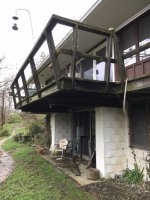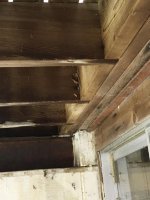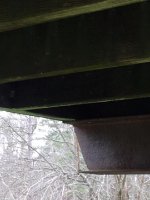Bob, The I-beams stick out from the house and support the board that the joists attach to. I called it a rim joist but that must not be right because it seemed to confuse folks. So the joists and the beams run in the same direction.
Cheese, How do you get the photos on here from your iphone? I took the photos off my iphone and put them in iphoto, but cannot seem to attach them here. I tried drag and drop and searched for the img number to attach here with no luck.
Seth, Thanks for the info on getting photos uploaded but I'm still not having any luck. If cheese doesn't have any tips for me I might just email them to you. Or just show you at the next Festool Connect [laughing]. And yes, the beams are perpendicular to the house wall (which are vertical!)
Tom
Cheese, How do you get the photos on here from your iphone? I took the photos off my iphone and put them in iphoto, but cannot seem to attach them here. I tried drag and drop and searched for the img number to attach here with no luck.
Seth, Thanks for the info on getting photos uploaded but I'm still not having any luck. If cheese doesn't have any tips for me I might just email them to you. Or just show you at the next Festool Connect [laughing]. And yes, the beams are perpendicular to the house wall (which are vertical!)
Tom




